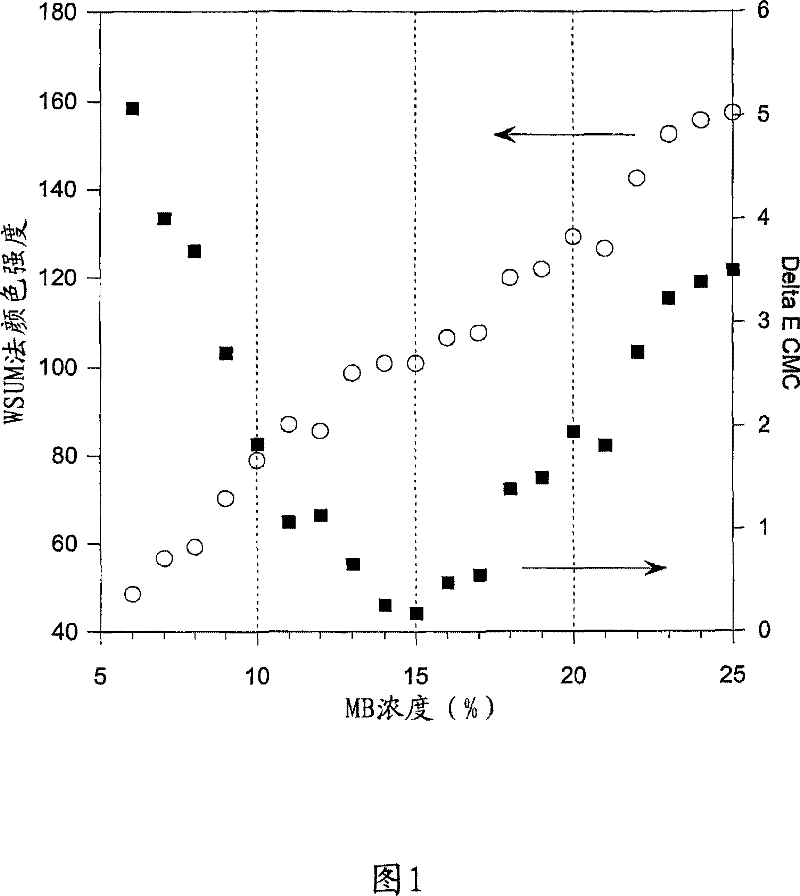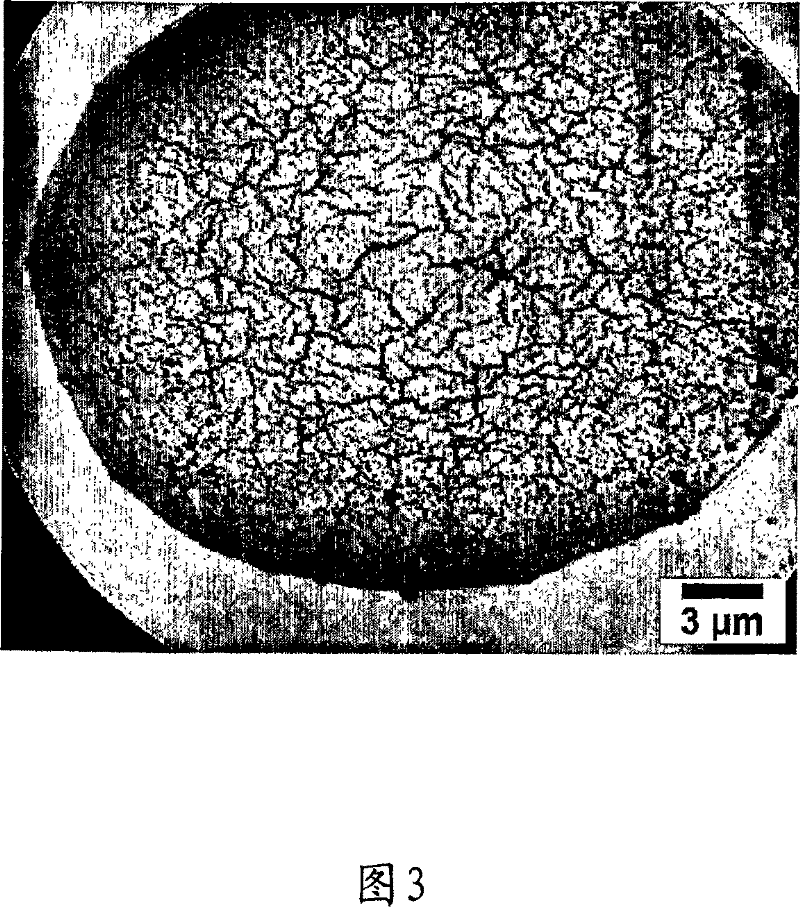Dyed polyolefin yarn and textile fabrics using such yarns
A polyolefin, polyolefin fiber technology, applied in the field of dyed polyolefin yarn and fabrics using this yarn
- Summary
- Abstract
- Description
- Claims
- Application Information
AI Technical Summary
Problems solved by technology
Method used
Image
Examples
preparation example Construction
[0075] The preparation of the compositions of the invention can be accomplished in several different ways. By contacting a dye enhancer comprising a terephthalate-based amorphous copolyester alone or optionally a polyolefin compatibilizer with a polyolefin polymer, by, for example, dry blending these materials and then passing the entire composition through extrusion Off the machine, dye enhancers can be added to the polyolefin. Those skilled in the art will readily appreciate that the components may be fed individually to the feed throat of the melt extruder rather than dry blending them prior to feeding into the extruder. Alternatively, the components can be sent directly to mixing equipment such as mixing extruders, high shear continuous mixers, two roll mills, intensive mixers such as Banbury, and the like. An alternative to mixing to ensure adequate dispersion of the dye enhancer is to mix in two stages. The first stage to prepare the concentrate (or masterbatch) involv...
Embodiment I
[0092] Example I - Monochrome Fabric
[0093] a) extrusion has 8 to 22 [HI1] dg / min melt flow index (measured with ASTM D-1238, condition L-230 / 2.16) of polyolefin pellets and blends using the above preferred PETG and polypropylene-graft-maleic anhydride mixture mix closely. A blend of 95% polyolefin and 5% PETG / polypropylene-graft-maleic anhydride was extruded into staple fibers using conventional fiber extrusion equipment. Fiber was 1.8 dpf and was cut to 1.5" (3.8 cm). Approximately 1,000 pounds (454 kg) of staple fiber were produced and packaged. The denier per filament was close to cotton, so it was a staple length.
[0094] b) Dye-enhanced polyolefin bales of rayon are mixed together during the carding process and made into an intimate blend of rovings. Roving made on conventional cotton equipment was ring spun to 10 / 1 cotton count and wound on 3 lb (1.3 kg) wraps. Approximately 1000 lbs (454 kg) of yarn were produced.
[0095] c) Knit 10 / 1 polyolefin yarn on a 10...
Embodiment II
[0099] Example II - Shades on Polyolefin Fabrics
[0100] a) Intimately mixing polyolefin pellets with a melt flow index of 8-22 dg / min with the above-mentioned dye enhancer. The mixture was 95% polyolefin with 5% dye enhancer consisting of PETG and polypropylene-graft-maleic anhydride as described in the present invention. The mixture is extruded into staple fibers using conventional staple fiber extrusion equipment. The dpf was 1.8 and cut to 1.5" (3.8 cm). Approximately 1,000 pounds (454 kg) of staple fiber were produced and packaged. The denier per filament was close to that of cotton, so it was a staple length. This batch was referred to as "Fiber A".
[0101] b) Intimately mixing polyolefin pellets with a melt flow index of 8-22 dg / min with the above-mentioned dye enhancer. The blend was 97% polyolefin with 3% disperse dye enhancing concentrate consisting of PETG and polypropylene-graft-maleic anhydride as described in this invention. The mixture is extruded into sta...
PUM
| Property | Measurement | Unit |
|---|---|---|
| melting point | aaaaa | aaaaa |
| diameter | aaaaa | aaaaa |
Abstract
Description
Claims
Application Information
 Login to View More
Login to View More - R&D
- Intellectual Property
- Life Sciences
- Materials
- Tech Scout
- Unparalleled Data Quality
- Higher Quality Content
- 60% Fewer Hallucinations
Browse by: Latest US Patents, China's latest patents, Technical Efficacy Thesaurus, Application Domain, Technology Topic, Popular Technical Reports.
© 2025 PatSnap. All rights reserved.Legal|Privacy policy|Modern Slavery Act Transparency Statement|Sitemap|About US| Contact US: help@patsnap.com



